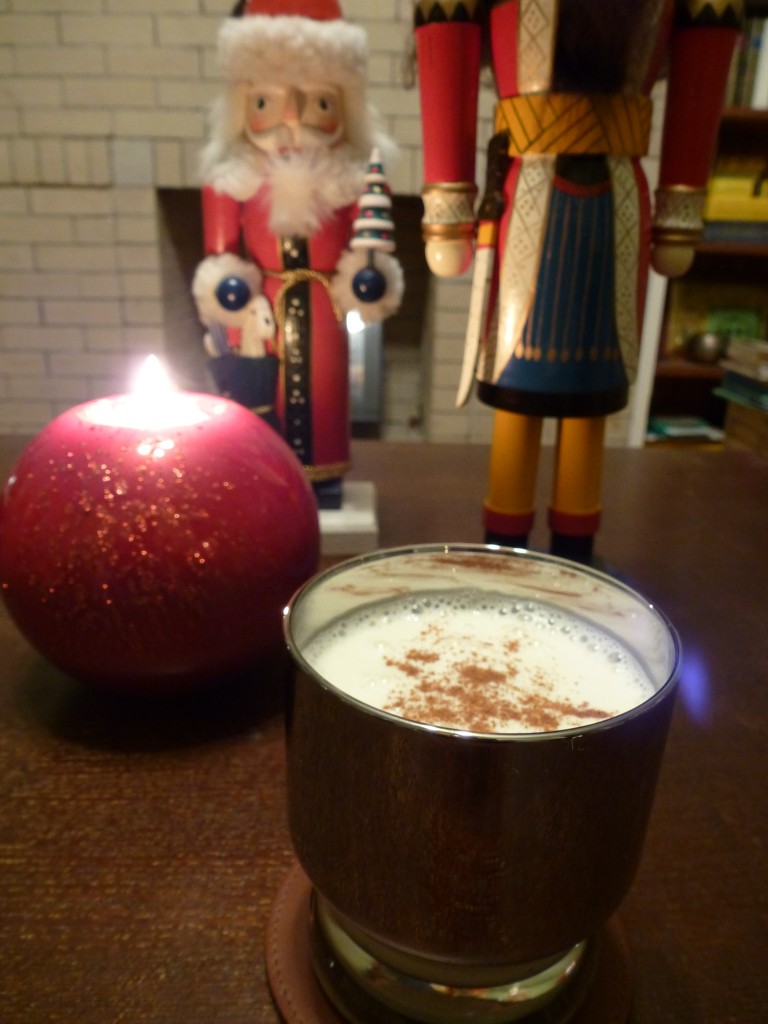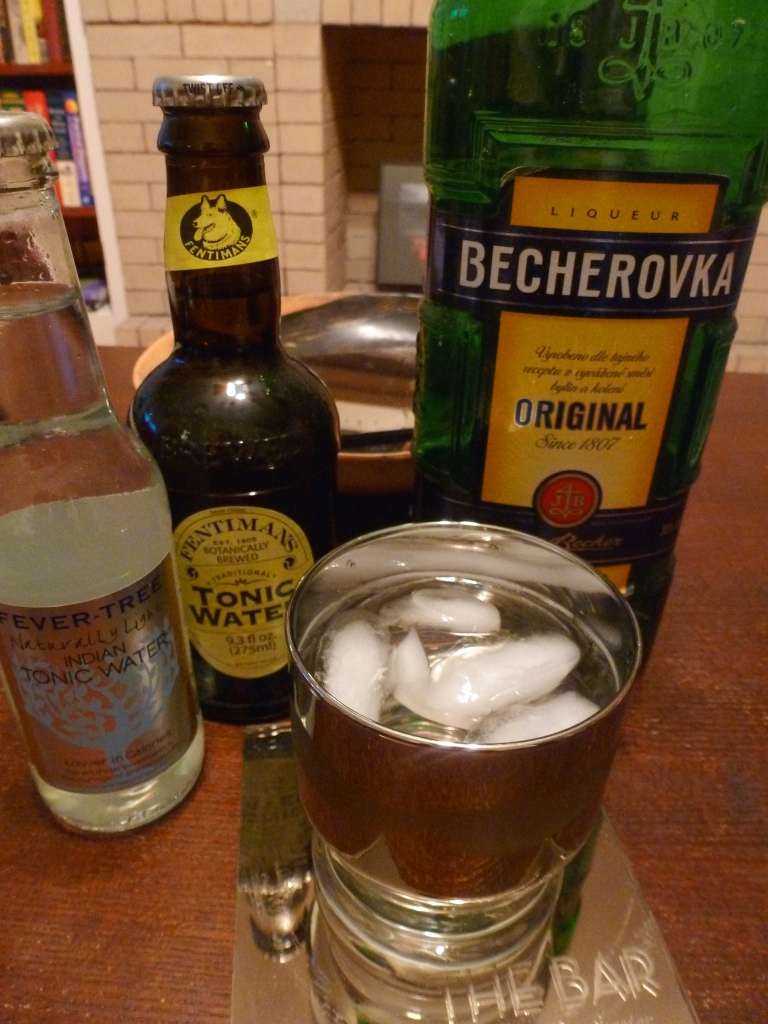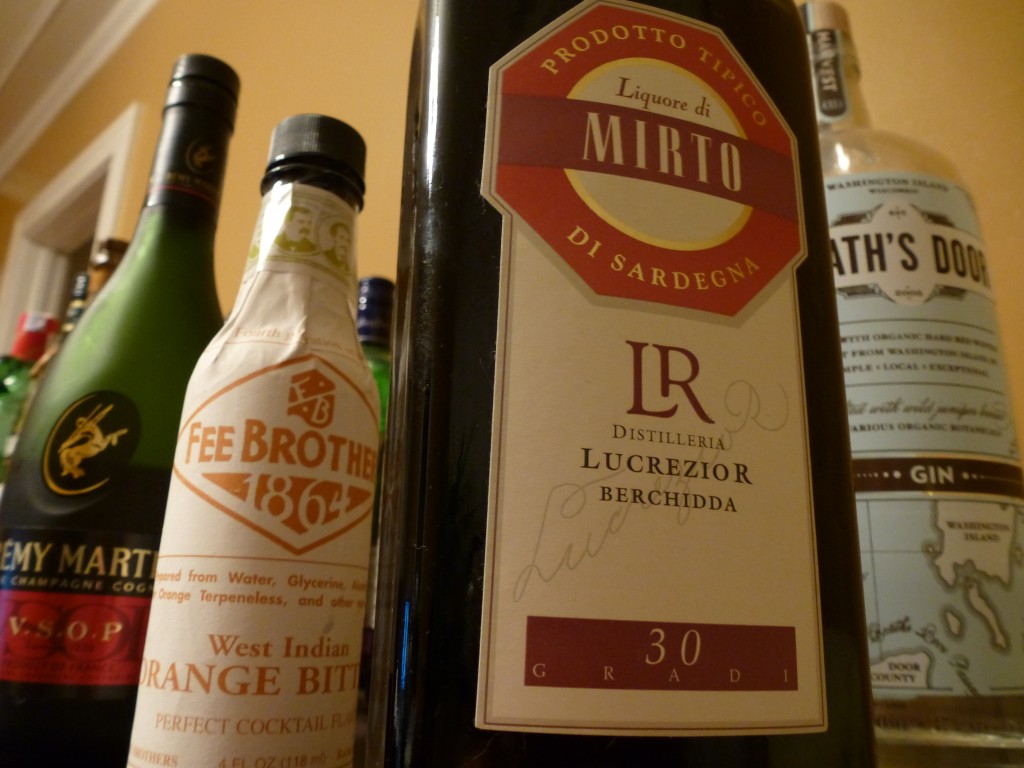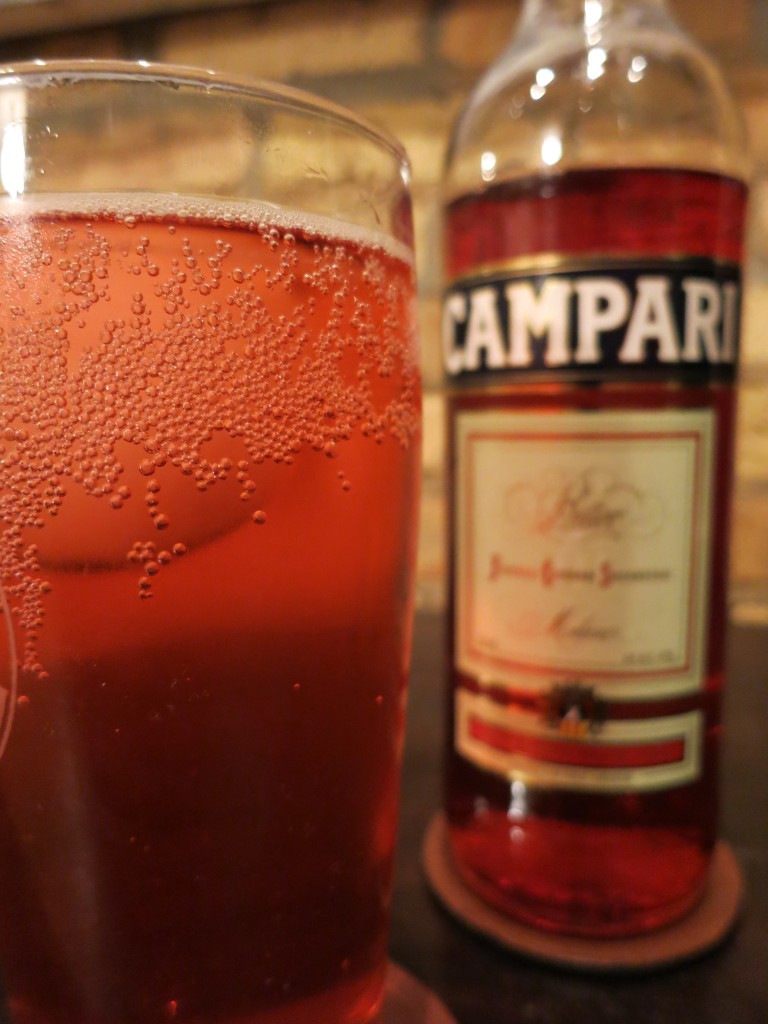Cocktails For Your Christmas Party
Festive Christmas parties provide a delightful excuse to serve a special cocktail or two, and goodness knows I love a special cocktail or two (or three or four). Over the years of writing this blog, I’ve come up with a number of cocktails ideal for holiday parties, but I’ve never assembled them in one place.
Here are the recipes of some of my very favorite drinks for the holidays, an array of concoctions using everything from gin and bourbon to mirto and arrack. I developed each of these recipes myself, working hands-on with the ingredients in my mixology laboratory, laboriously testing and tasting. I hope you find the results of my efforts as delicious as I did.
SANTA’S HELPER
–4 parts Bourbon, pre-chilled
–1 part Triple Sec, pre-chilled (Stirrings makes an “all natural” version of this orange-flavored liqueur)
–1 part Ginger Liqueur, pre-chilled (a number are on the market, but Stirrings’ is less expensive than most others)
–9 parts Eggnog (1.5 times as much eggnog as alcohol. Use organic eggnog if possible, made from real eggs and cream.)
Pour all the ingredients, ending with the eggnog, in your glass or a pitcher. Stir to combine, and serve in a lowball or rocks glass. Do not use ice at any point in the process (if you’re making a pitcher and wish to keep it chilled, invest in non-melting ice cubes). The eggnog, orange, ginger and bourbon all have their moment on your palate, making for a delicious and surprisingly complex journey.
It’s traditional to top your eggnog with some freshly grated nutmeg, but that’s a pain, and there’s already plenty of nutmeg in most store-bought eggnogs. I prefer a little cinnamon powder on top of my nog. If you want to get fancy, top your eggnog with a touch of cinnamon and a sprinkle of ginger powder. Even fancier, top with a bit of ginger powder and garnish with a whole cinnamon stick.
BETON
Like a gin and tonic, the Czech Beton (Becherovka and tonic) features aromatic herbal and floral notes as well as a touch of bracing bitterness. But the Beton goes further, with strong flavors of clove, pine and even some cinnamon. A gin and tonic is unquestionably a summer cocktail, but a Beton is Christmas in a glass.
1 part Becherovka (a wonderful herbaceous and bitter spirit produced in the Czech spa town of Karlovy Vary)
1-1.5 parts Tonic
Gently mix the above in a highball glass with a large cube of ice or two. If you’re feeling fancy, garnish with a lime slice or a sprig of rosemary. If the ratio above proves too boozy for you, you can adjust it to your taste, of course.
I usually purchase my tonic at Whole Foods, which sells a corn syrup-free version in inexpensive six packs. But for this cocktail, I stopped at In Fine Spirits to pick up some “craft” tonics. After all, a cocktail this simple calls for quality ingredients.
Both Fever Tree and Fentimans are wildly expensive, but you can eke two cocktails out of the Fever Tree and three out of the Fentimans. Mixed with the Becherovka, the Fever Tree version hit me with a lusty blast of clove, juniper and cinnamon. It was a Christmas party in my mouth. The Fentimans Beton still felt very Christmasy, but it tasted somehow rounder and deeper — more like an intimate gift exchange by the fireplace.
Either tonic makes a beautiful Beton, but if you prefer Canada Dry or Schweppes, go for it. You’ll have a uniquely delicious cocktail in any case.
WHITE LION SIDECAR
–2 parts White Lion VSOA (A Sri Lankan arrack distilled from coconut flower nectar, White Lion has appealingly fragrant aromas of bright vanilla cake and caramel, like a sweet cognac. It starts sweet and smooth on the palate, before blossoming into white-peppercorn spice and an aromatic finish of something savory and herbaceous.)
–1 part Orange Liqueur (I used Stirrings Triple Sec, but Cointreau or Gran Marnier would also be lovely)
–1 part Freshly-Squeezed Lemon Juice (do not use bottled juice or, heaven forbid, sour mix)
Juice your lemon, and use the amount of juice you get as the measure of one part. A standard lemon will make one large Sidecar or two small ones. Combine all the ingredients in a shaker with ice, shake vigorously, and strain into a martini glass. It’s traditional to rim the glass with sugar, but I can’t be bothered with that sort of thing. The cocktail had a luscious aroma of orange and caramel, and its darkly sweet flavors were balanced perfectly by the bright citrus. It’s a smashing drink.
MIRTINI
2 parts Gin (I used Death’s Door)
1 part Mirto (A Sardinian myrtle-berry liqueur. It tastes of ripe cherries and something herbal, like eucalyptus perhaps, with cinnamon on the finish. You can order it online here, or check with a well-stocked liquor store.)
1/2 part Fresh-Squeezed Lemon Juice
Combine the above in a shaker filled with ice, agitate, and strain into a chilled martini glass. Garnish with a twist of lemon, if you’re feeling extra fancy. The drink starts with bright notes from the botanicals in the gin and moves into the more grounded, darker notes of the mirto before finishing with a flash of brandied cherries and cinnamon. The lemon holds it together, providing necessary texture and enhancing the flavors.
And because some people are wise enough not to booze it up every chance they get, I also recommend having at least one quality non-alcoholic cocktail on hand. Here are two of my favorites for this time of year:
APFELSCHORLE
(I didn’t make this one up — this is a classic German refreshment.)
–1 part Unfiltered Apple Cider
–2 parts Club Soda (or mineral water, if you want to be really authentic)
I prefer club soda in this cocktail because the larger bubbles stand up better to the apple cider, but Germans traditionally use mineral water, because they seem to be addicted to the stuff. Whichever way you go, fill up a tumbler about 2/3 full with club soda or mineral water, and top off with the apple cider. If you want to get really fancy, you can garnish with a long cinnamon stick.
FANCY CHERRY LEMON STUFF
(Suggestions for alternative names are welcome.)
–1 can of Club Soda
–Juice of one Lemon
–1 ounce Tart Cherry Juice (100% tart cherry juice tastes like rich cherry pie in a glass, which makes some sense, since the juice comes from the same cherries used for pies. But though the juice is sweet, it is by no means cloying or syrupy. If no sugar is added to the juice, it retains its tart punch and complexity.)
–1 Orange Slice
Juice the lemon. Pour the can of club soda over a little ice in a large tumbler. Add in the lemon juice, and a full shaker cap (about one ounce) of 100% tart cherry juice (available at Whole Foods). This cocktail tastes complex and sweet, but not too sweet. The orange garnish is important in this case. It adds another layer, the aroma mixing beautifully with the flavors of the drink.
And if you’re feeling courageous, and you have a fire extinguisher within easy reach, you might consider embarking on the adventure that is Feuerzangenbowle. This flaming German punch is too complex to explain in this post — you can see my full recipe and all my safety recommendations here — but it is thoroughly delicious, wonderfully festive, and I try to serve it at least once a year. It never fails to be a hit.











